【人気ダウンロード!】 anthracite coal strike 110009-Anthracite coal strike definition
Anthracite is a highrank coal, representing a coal that has been subjected to the highest grade of metamorphism 14 What two developments caused anthracite workers to organize?The early morning whistles blew across Pennsylvania's coal country on May 12, 1902 But 147,000 men and boys didn't heed the summons to the mines On that Monday they wouldn't dig out theThe Anthracite Coal Strike Of 1902 Download and Read online The Anthracite Coal Strike Of 1902 ebooks in PDF, epub, Tuebl Mobi, Kindle Book Get Free The Anthracite Coal Strike Of 1902 Textbook and unlimited access to our library by created an account Fast Download speed and ads Free!

American History Usa
Anthracite coal strike definition
Anthracite coal strike definition-Iain Sarjeant/E/Getty Images President Theodore Roosevelt initially invited the coal miners' union representatives and the mine owners to meet to settle the Coal Strike of 1902 because the nation needed coal to provide heat in the coming winter When the two sides refused to negotiate, he threatened to use soldiers to man the mines during the strike, and the loss of money for both sides brought them back to negotiationsSummary and Definition The Anthracite Coal Strike of 1902 was one of America's largest industrial strikes and threatened a national coal shortage The unions were willing to negotiate but the coal miners refused to participate in the conciliation process until President Roosevelt intervened
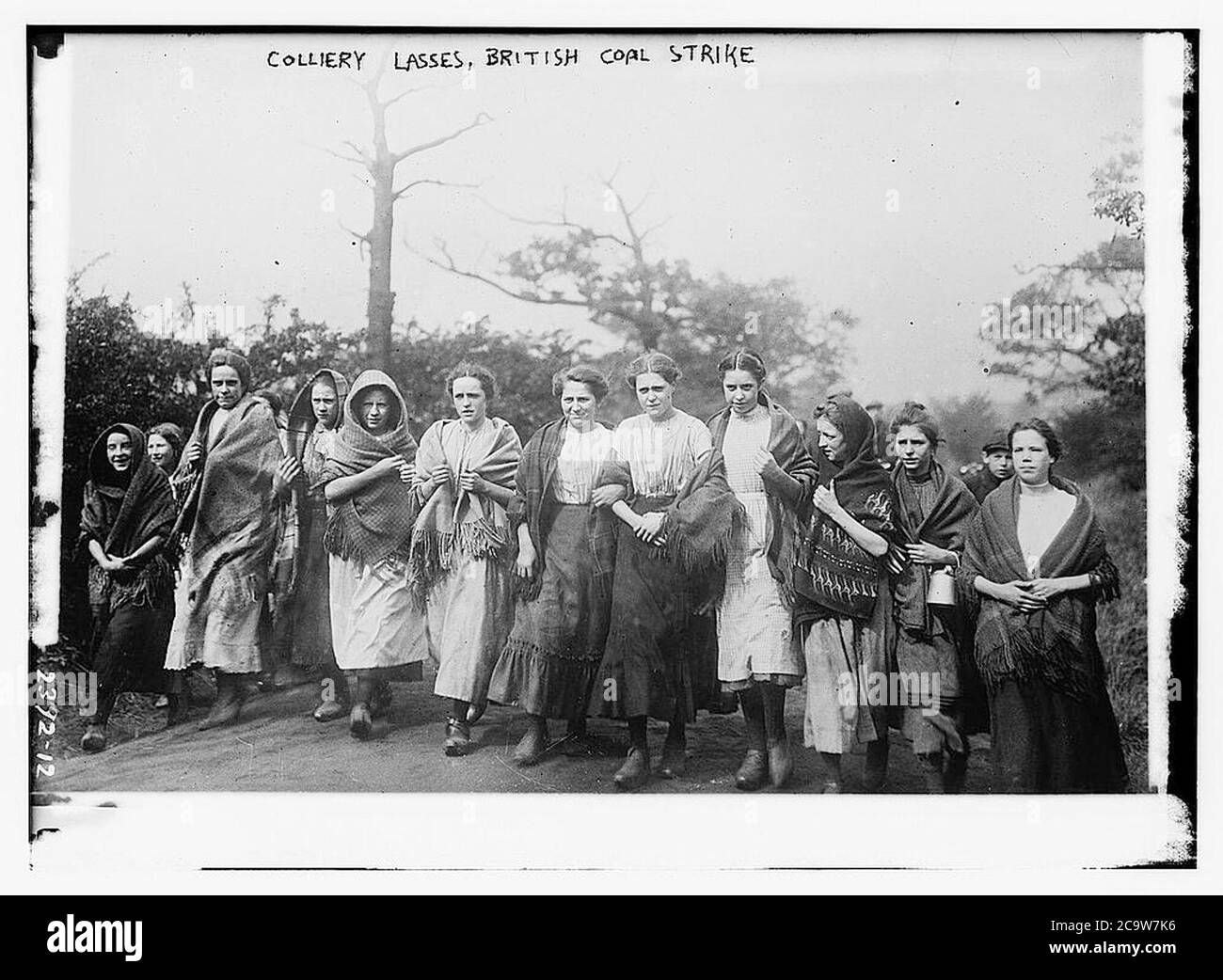


Coal Strike Black And White Stock Photos Images Alamy
The Coal strike of 1902 (also known as the anthracite coal strike) was a strike by the United Mine Workers of America in the anthracite coalfields of eastern PennsylvaniaMiners striked for higher wages, shorter workdays, and the recognition of their unionThe strike threatened to shut down the winter fuel supply to major American citiesAnd Perry Tetlow, president of UMW District 17Anthracite Coal Strike Union Action in 1902 The Anthracite Strike of 1902 was an effort by the United Mine Workers to get higher waves, shorter hours, and recognition of their union The history of federal government intervention in labor matters up to this time showed a clear favoritism for management
Anthracite Coal Strike Commission Argument of H T Newcomb of the Counsel for the Philadelphia and Reading Coal and Iron Company (Classic Reprint) Paperback – September 27, 15 by Harry Turner Newcomb (Author)On Strike On 12 May 1902, 147,000 anthracite coal miners of the United Mine Workers (UMW) walked off the job in central and northeastern Pennsylvania to force the coal mine owners to meet their demandsAnthracite is a highrank coal, representing a coal that has been subjected to the highest grade of metamorphism 14 What two developments caused anthracite workers to organize?
Still, Congressional anger over a coal miner's strike caused Congress to pass on June 25, 1943, over a presidential veto, the SmithConnally Act that installed a mandatory cooling off period and reaffirmed existing government authority to seize and operate striking factories and sitesOn Strike On 12 May 1902, 147,000 anthracite coal miners of the United Mine Workers (UMW) walked off the job in central and northeastern Pennsylvania to force the coal mine owners to meet their demandsNational Guard encampment in Heilwood during the 1922 coal strike Following World War I, the demand for coal declined markedly The many owners and operators who had expanded their coal mines and added employees during the war were now forced to drastically reduce their overall production



Coal Strike Of 1902 Wikipedia
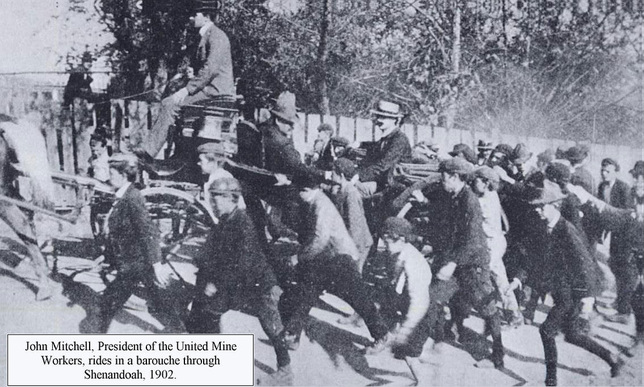


Tr The Pennsylvania Coal Strike Of 1902 Mr Jensen S U S History Website
The Anthracite Coal Strike George F Baer, leader of the anthracite operators in 1902 John Mitchell, The Labor Leader and The Man Cartoons express opinion about the strike Ohio State University students can explore the anthracite strike on HarpWeek from the link on this pageAnthracite Coal Strike the 1902 strike in which Theodore Roosevelt summoned both sides to the White House and, after threats of seizure and use of troops, reached a compromise of a 10% pay increase and a ninehour dayAnthracite Coal Strike Commission Argument of H T Newcomb of the Counsel for the Philadelphia and Reading Coal and Iron Company (Classic Reprint) Paperback – September 27, 15 by Harry Turner Newcomb (Author)



Coal Strike Of 1902 Wikipedia


The Clarence Darrow Collection
The anthracite coal strike of 1902 involved over 147,000 of the ethnically diverse miners of eastern Pennsylvania Their goals were to gain operator recognition of the United Mine Workers (UMW), increased wages, and improved working conditions Source for information on Anthracite Strike Dictionary of American History dictionaryOn this day in 1902, President Teddy Roosevelt summoned Pennsylvania anthracite miners and coal field operators to the White House in a bid to settle a strike, then in its fifth month In doing so,An Irish 19 th century secret society 16 Why was the great railroad strike
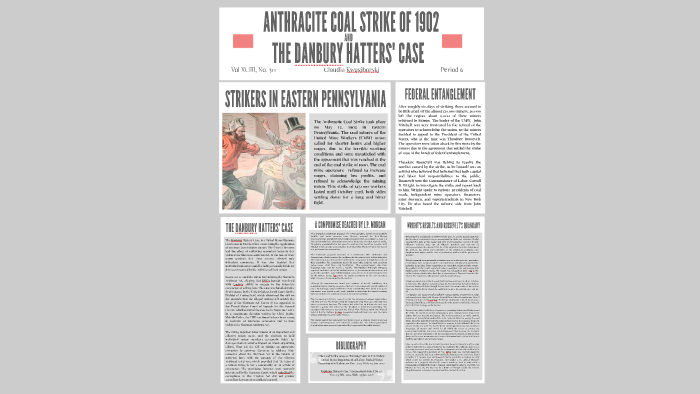


Anthracite Coal Strike Of 1902 By Claudia Kwasiborski



Cartoon Comments On The Coal Strike And Its Settlement Ehistory
Anthracite Coal Strike On May 12, 1902 workers from the United Mine Workers of America led by John Mitchell started striking to fight for better wages and less strenuous working hoursReport to the President on the anthracite coal strike of MayOctober, 1902, by the Anthracite Coal Strike CommissionCoal Strike of 1902 & Cold Coal War 15 What was a "Molly Maguire"?



Cartoon Comments On The Coal Strike And Its Settlement Ehistory



Coal Strike Black And White Stock Photos Images Alamy
Start studying Anthracite Coal Strike Learn vocabulary, terms, and more with flashcards, games, and other study toolsThe early morning whistles blew across Pennsylvania's coal country on May 12, 1902 But 147,000 men and boys didn't heed the summons to the mines On that Monday they wouldn't dig out theAnthracite coal strike officially began July Newspapers began to report incidents of violence in the mining region July 30 A storeowner was beaten to death by a mob while a deputy sheriff was escorting two miners who refused to join the strike



American History Usa



The Anthracite Coal Miners Strike Of 1902 Study Com
The Coal strike of 1902, also known as the anthracite coal strike, 1 2 was a strike by the United Mine Workers of America in the anthracite coalfields of eastern Pennsylvania Miners were on strike asking for higher wages, shorter workdays and the recognition of their unionThe Great Anthracite Coal Strike started when 147,000 coal miners who were part of the United Mine Workers of America (UMWA) went on strike in Eastern Pennsylvania from May to Oct 1902The Anthracite Coal Strike George F Baer, leader of the anthracite operators in 1902 John Mitchell, The Labor Leader and The Man Cartoons express opinion about the strike Ohio State University students can explore the anthracite strike on HarpWeek from the link on this page



Report To The President On The Anthracite Coal Strike Of May October 1902 By The Anthracite Coal Strike Commissioncontained In State Documents No 1 Nos 1 12 Except Nos 3 11 Miscellaneous 58th Congress Special



147 000 Ordered To Strike The Beginning Of The 1902 Anthracite Coal Strike Wynning History
The primary difference between the 1902 Anthracite Strike and previous strikes both in the anthracite fields in northeastern Pennsylvania and the mining industry in general was the role of theAnthracite Coal Strike Eastern Pennsylvania United States 1901 US Steel Recognition Strike of 1901 Homestead, Pennsylvania United States 1902 Anthracite Coal Strike Illinois, Mississippi and Texas United States 1903 Oxnard Strike of 1903 Oxnard, California United States 1903 Utah Coal Strike Carbon County, Utah United States 1903–1904The Coal Strike of 1902 was a strike by the United Mine Workers of America in the anthracite coal fields of eastern Pennsylvania It played a role in the history of mining, marking the first federal intervention in the business The strike threatened to shut down the winter fuel supply to all major cities (homes and apartments were heated with anthracite or "hard" coal because it had higher heat value and less smoke than "soft" or bituminous coal)



Today In History October 3 Library Of Congress



The Anthracite Coal Strike Of 1902 Research Papers
An Irish 19 th century secret society 16 Why was the great railroad strikeAnthracite Coal Strike of 1902 Michael Hannon (10) Anthracite Coal Anthracite coal is a hard, compact variety of mineral coal with the highest carbon count and the fewest impurities of any type of coal The other major type of coal used for fuel is bituminous coal, a relatively soft coal that contains a tarlike substance called bitumenAnthracite Coal Strike of 1902 Michael Hannon (10) Anthracite Coal Anthracite coal is a hard, compact variety of mineral coal with the highest carbon count and the fewest impurities of any type of coal The other major type of coal used for fuel is bituminous coal, a relatively soft coal that contains a tarlike substance called bitumen



Cartoon Comments On The Coal Strike And Its Settlement Ehistory


3
The Anthracite Coal Strike of 1902 resulted in a victory for the hardcoal miners with a 10% increase in wages and an hours reduction in their working day Anthracite coal was the most popular fuel for heating in the northern United States from the 1800s until the 1950s How was the anthracite coal strike resolved?The Pennsylvania Department of Environmental Protection's Office of Active and Abandoned Mine Operations has collaborated with Pennsylvania State University to produce the Pennsylvania Mine Map Atlas This enormous resource contains thousands of detailed coal mine maps that can be overlaid on a variety of base maps for the entire state, including terrain, topographic and road maps, and aerialBetween 1865 and 1877 the anthracite coal fields of northeastern Pennsylvania were racked by tense, often violent conflict between immigrant miners and the coal companies, which worked in common to cement their absolute control of the collieries The collapse of the Workingmen's Benevolent Association and hanging of the Molly Maguires



Today In History October 3 Library Of Congress


Great Coal Strike Of 1902 Stephen Koppekin
The early morning whistles blew across Pennsylvania's coal country on May 12, 1902 But 147,000 men and boys didn't heed the summons to the mines On that Monday they wouldn't dig out theThe Anthracite Coal Strike of 1902 resulted in a victory for the hardcoal miners with a 10% increase in wages and an hours reduction in their working day laminiaduo7 and 19 more users found this answer helpful heart outlinedAnthracite Coal Strike, Pa, 1902 Governmental investigations



Coal Strike Of 1902 Wikipedia


1902 The Great Coal Strike In Shenandoah Pa Schuylkill County Historical Society
With the establishment of the Anthracite Coal Strike Commission, Mitchell called off the strike on October 23 It had lasted for 163 days There were seven recorded deaths and numerous stories of terror and crime committed on both sides, but the "Great Strike" earned a reputation as being one of the most organized strikes to dateCoal Strike of 1902 & Cold Coal War 15 What was a "Molly Maguire"?The Anthracite Coal Strike of 1902 resulted in a victory for the hardcoal miners with a 10% increase in wages and an hours reduction in their working day New questions in History Adult Gon ( hxh ) vrs Naruto Kurama link mode (NarutoShippuden)



How A 17 Massacre Of Pennsylvania Coal Miners Morphed From A Galvanizing Crisis To Forgotten History History Smithsonian Magazine



Today In History October 3 Library Of Congress
An Anthracite Coal Strike in Eastern Pennsylvania Coal was a very common method of home heating in the early 1900s Often there would be a central stove connected to a ventilation system, with a steady supply of fresh coal needed to keep the system working There was no real backup material at that timeThe Anthracite Coal Strike (MayOctober 1902) began after mine operators refused to meet with representatives of the United Mine Workers of America Anthracite—or hard coal—was solid and rich in carbon, ideal for industrial and domestic use The strike began in eastern Pennsylvania, where almost all anthracite coal was mined at the time, on May 12, 1902, after the railroad companies which owned the mines refused to meet with representatives of the unionStart studying Anthracite Coal Strike Learn vocabulary, terms, and more with flashcards, games, and other study tools
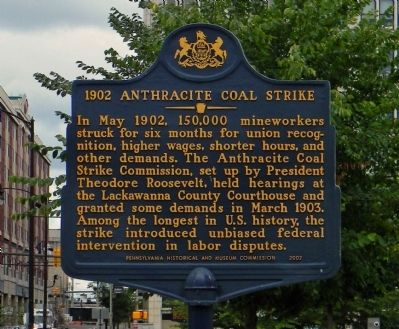


1902 Anthracite Coal Strike Historical Marker


The Pennsylvania Center For The Book Great Anthracite Coal Strike Of 1902
On this day in 1902, President Teddy Roosevelt summoned Pennsylvania anthracite miners and coal field operators to the White House in a bid to settle a strike, then in its fifth month In doing so,The Coal strike of 1902, also known as the anthracite coal strike, was a strike by the United Mine Workers of America in the anthracite coal fields of eastern Pennsylvania Miners were on strike asking for higher wages, shorter workdays and the recognition of their union The strike threatened to shut down the winter fuel supply to all major cities (homes and apartments were heated with anthracite or "hard" coal because it had higher heat value and less smoke than "soft" or bituminous coal )In 1902, many coal workers went on strike in Anthracite, Pennsylvania and demanded a % raise in salary Theodore Roosevelt called for the owners and laborers to talk TR believed the government had to intervene to fix the situation, since fuel was important to the entire economy


1902 Anthracite Coal Strike Carbondale Historical Society



Amazon Com The Great Strike Perspective On The 1902 Anthracite Coal Strike Robert A Janosov Joseph P Mckerns Lance E Metz Robert C Wolensky Joseph M Gowaskie Books
John L Lewis, president of the UMW;Amazoncom The Great Strike Perspective On The 1902 Anthracite Coal Strike () Robert A Janosov, Joseph P McKerns, Lance E Metz, Robert C WolenskyAnthracite Coal Strike, Pa, 1902 Governmental investigations



Coal Strike Of 1902 Wikipedia


The Pennsylvania Center For The Book Great Anthracite Coal Strike Of 1902
The strike of 1900 was the prelude to a larger dramathe great anthracite coal strike of 1902 Restless miners demanded more pay and shorter hours, while the mine operators complained that profits were low, and that the union destroyed disciplineAnthracite Coal Strike On October 3, 1902, President Theodore Roosevelt met with miners and coalfield operators from the anthracite coalfields in Pennsylvania in an attempt to settle the strike, then in its fifth month The country relied on coal to power commerce and industry and anthracite or "hard coal" was essential for domestic heatingWhen the anthracite miners went on strike, Republican politicians pushed Mitchell to find an expedient end to the strike so that it would be a peaceful election year and President McKinley could be reelected Mitchell managed to arrange an end to the strike after five weeks by reaching a settlement for both sides, although it did not address some of the worker's leading demands



Report To The President On Anthracite Coal Strike United States Bureau Of Labor Carroll Davidson Wright Amazon Com Books


Mstartzman 1902 Anthracite Coal Strike 7
Leaders of the United Mine Workers (UMW) confer during a War Labor Board hearing about the anthracite coal miners' strike, Jan 15, 1943 From left to right Thomas Kennedy, secretarytreasurer of the UMW;John Mitchell led the United Mine Workers through the 51/2 month long anthracite coal strike of 1902 Workers rarely found a helping hand in the White House President Hayes ordered the army to break the Great Railroad Strike of 1877



Early Strikes Of Coal Miners 1849 1919



Cartoon Comments On The Coal Strike And Its Settlement Ehistory


Top Curve Magnifier Historical Markers Search Tips Advanced Search Magbottom The 1902 Anthracite Coal Strike Scranton Historical Marker Sign Mouse Over For Marker Text Name The 1902 Anthracite Coal Strike Scranton Region Poconos Endless
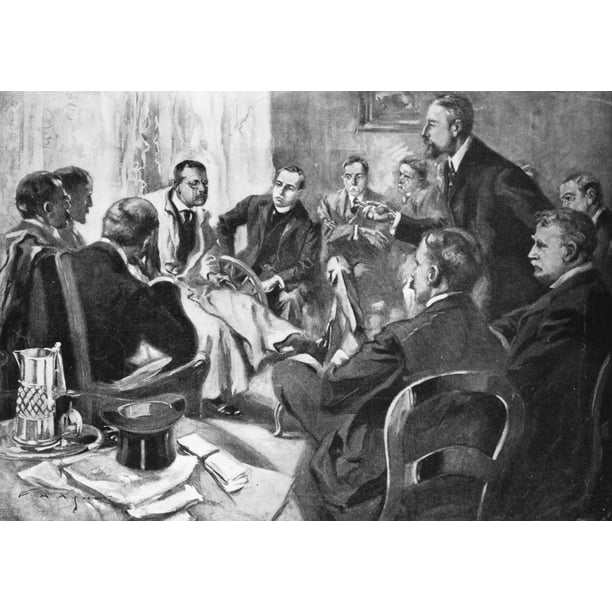


Coal Strike 1902 Npresident Theodore Roosevelt Meeting With The Anthracite Coal Company Owners In An Attempt To End Walmart Com Walmart Com


Q Tbn And9gcs4h9wmeqbehe2zxtd5 Ed5vubmsi Uq3cnlgq6bx2wboyvxpkk Usqp Cau


Great Coal Strike Of 1902 Stephen Koppekin



Industry They Worked In And The Jobs They Did Coal Strike Of 1902



1902 Anthracite Coal Strike Historical Marker



The Coal Strike That Defined Theodore Roosevelt S Presidency History Smithsonian Magazine
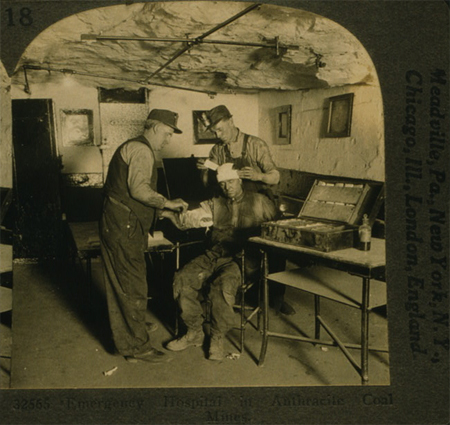


Today In History Anthracite Coal Strike Citizen U Primary Source Nexus



Cartoon Comments On The Coal Strike And Its Settlement Ehistory



A Trooper S Narrative Of Service In The Anthracite Coal Strike 1902 Pennsylvania Stewart Culin Coal Mining Labor First Edition



Labor Violence And The Industrialization Of Northeastern Pennsylvania 1871 1902 Anthracite Unite
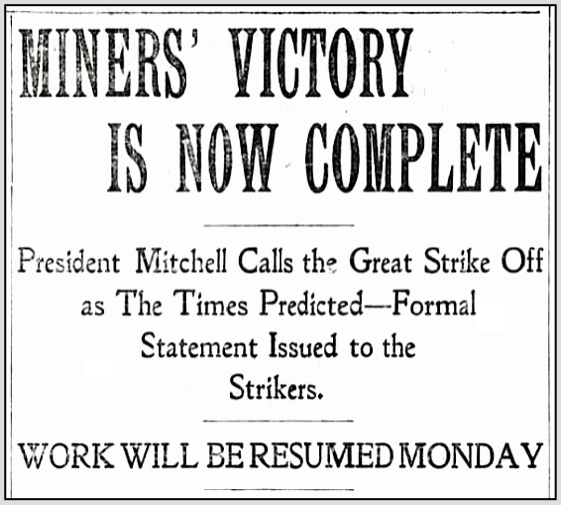


Hellraisers Journal United Mine Workers President John Mitchell Declares Victory In Great Anthracite Coal Strike We Never Forget
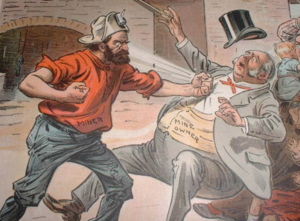


Coal Strike Of 1902 Encyclopedia Article Citizendium
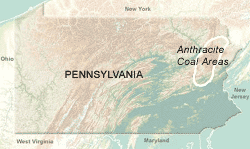


Anthracite Coal Strike Union Action In 1902



Thamanjimmy History Of The Anthracite Coal Strike Of 1902



Overview Of The Anthracite Coal Strike Of 1902 Progressiveeradotcom



What A 1902 Coal Strike Tells Us About Essential Workers Today



Report To The President On The Anthracite Coal Strike Of May October 1902 By The Anthracite Coal Strike Commission Anthracite Coal Strike Commission First Edition Separate Printing Not Contained In An Issued



Cartoon Comments On The Coal Strike And Its Settlement Ehistory



The Anthracite Coal Miners Strike Of 1902 Study Com


The Pennsylvania Center For The Book Great Anthracite Coal Strike Of 1902



Anthracite Coal Miner S Strike Scranton Pa 1902 Images Of Justice



147 000 Ordered To Strike The Beginning Of The 1902 Anthracite Coal Strike Wynning History



Strike American History History Coal
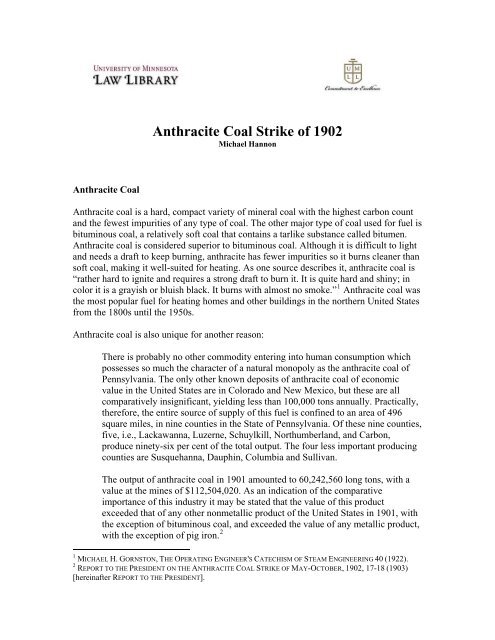


Anthracite Coal Strike Of 1902 The Clarence Darrow Collection
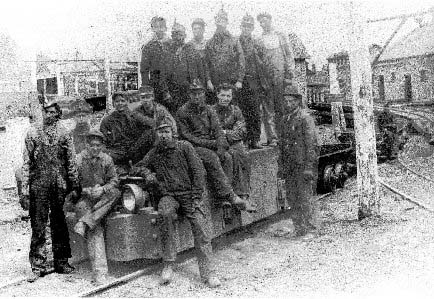


Remembering The 1906 Strike For Union In Windber Pennsylvania Unions And Mining Coal Culture Projects Special Collections And University Archives Departments Iup Libraries Iup



147 000 Ordered To Strike The Beginning Of The 1902 Anthracite Coal Strike Wynning History



Labor Capital And Government The Anthracite Coal Strike Of 1902



Falmanac Anthracite Coal Strike Of 1902


Roosevelt Vs Coal Strike Useful Information For Apush


Historical Marker 1902 Anthracite Coal Strike Lackawanna County Anthracite Coal Region Of Northeastern Pennsylvania



What If Essential Workers Staged A Mass Coronavirus Strike Bloomberg


Q Tbn And9gcsht4 Avvw5ul Qogmrreynqv8uvgzgh3zgsjudfpsyehazpk25 Usqp Cau



Cartoon Comments On The Coal Strike And Its Settlement Ehistory



147 000 Ordered To Strike The Beginning Of The 1902 Anthracite Coal Strike Wynning History


Coal Strike Red Scare Of 19 S
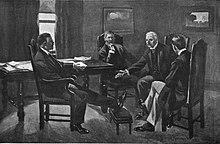


Coal Strike Of 1902 Wikipedia
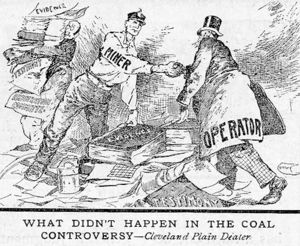


Coal Strike Of 1902 Encyclopedia Article Citizendium
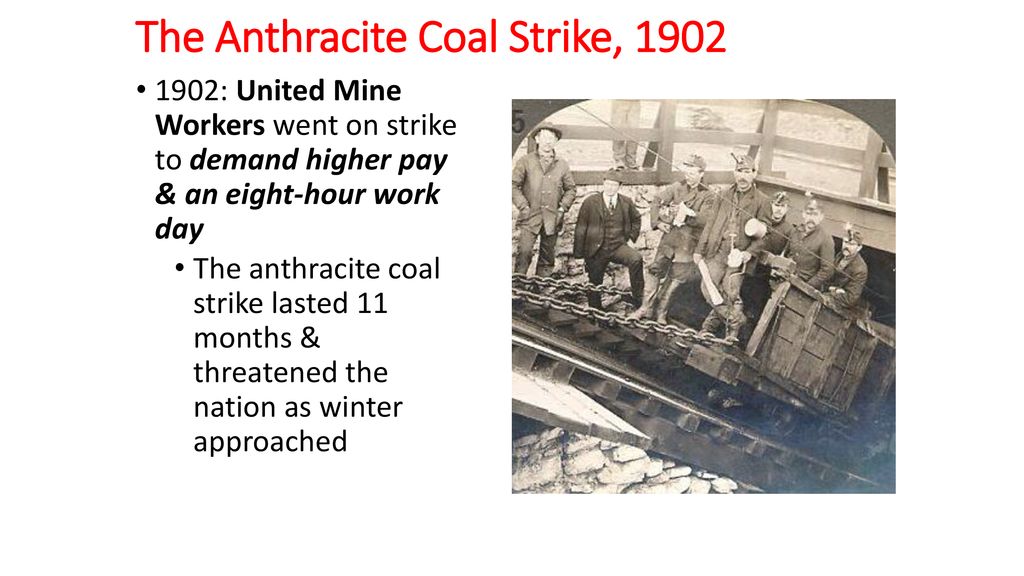


Aim How Did Progressive Presidents Roosevelt Taft And Wilson Work To Reform American Society During The Early 1900s Ppt Download



Coal Strike In 1900 Affects Presidential Politics Youtube


Explorepahistory Com Image



Today In History October 3 Library Of Congress



A Trooper S Narrative Of Service In The Anthracite Coal Strike 1902 Classic Reprint Culin Stewart Amazon Com Books


The Clarence Darrow Collection



Coal Strike Of 1902 Wikiwand


1902 Anthracite Coal Strike Anthracite Coal Region


Historical Marker 1902 Anthracite Coal Strike Schuylkill County Anthracite Coal Region Of Northeastern Pennsylvania


3



Coal Strike Of 1902 Wikiwand


The Pennsylvania Center For The Book Great Anthracite Coal Strike Of 1902


Theodore Roosevelt And Coal Strike Sherman S Apush
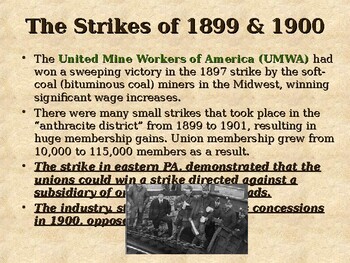


Labor Unrest In The U S The Great Anthracite Coal Strike Of 1902



A Trooper S Narrative Of Service In The Anthracite Coal Strike 1902 Classic Reprint Culin Stewart Amazon Com Books



Teddy Roosevelt S Square Deal Ppt Video Online Download
/railway_strike_1886-5fd0d0ea68ff4930a81a0eacaa01ff8b.jpg)


The 10 Biggest Strikes In U S History



Labor Wars In The U S American Experience Official Site Pbs



Amazon Com Coal Strike 1902 Npresident Theodore Roosevelt Meeting With The Anthracite Coal Company Owners In An Attempt To End The Strike Of 1902 Contemporary Illustration Poster Print By 18 X 24 Posters Prints
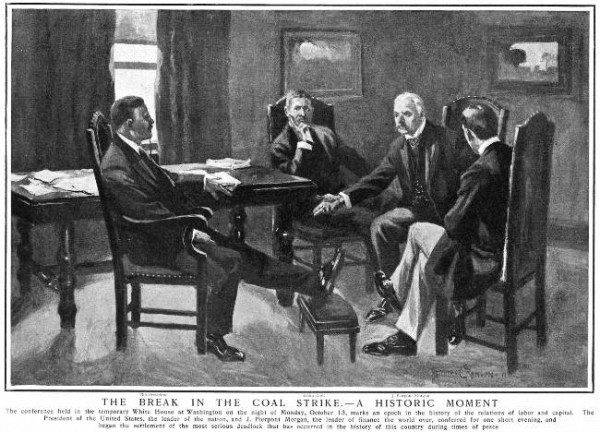


A Helping Hand For Labor Ushistory Org



At The End Of The 19th Century Uaw International Union Facebook


Anthracite Coal Strike Commission Appointed 1902 By President Roosevelt Digital File From Original Library Of Congress
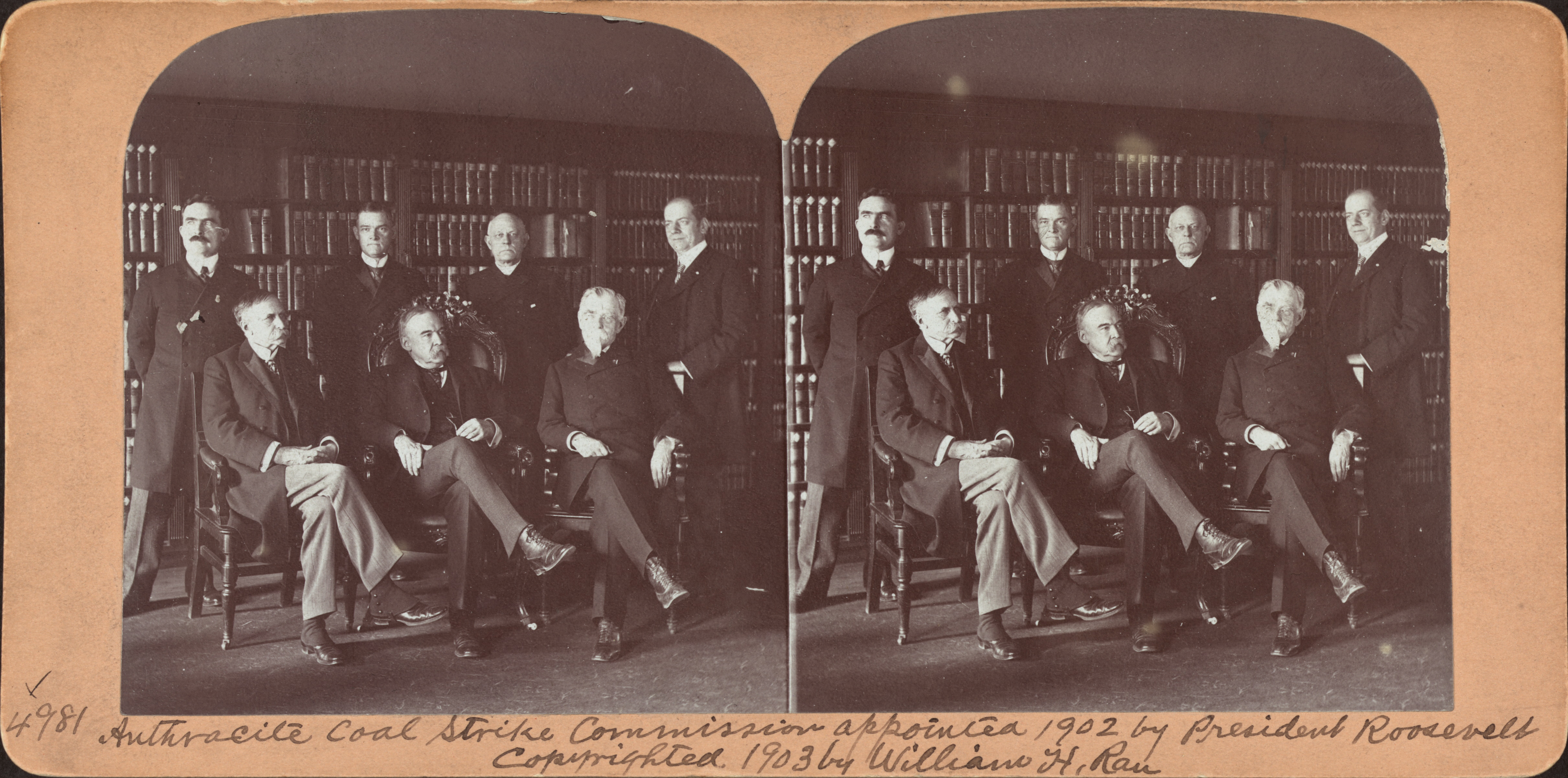


File Wrau Coal Strike Commission Jpg Wikimedia Commons


Top Curve Magnifier Historical Markers Search Tips Advanced Search Magbottom The 1902 Anthracite Coal Strike Scranton Historical Marker Sign Mouse Over For Marker Text Name The 1902 Anthracite Coal Strike Scranton Region Poconos Endless


The Pennsylvania Center For The Book Great Anthracite Coal Strike Of 1902


Theodore Roosevelt Anthracite Coal Strike Muckraker Weekly



Pin On King Coal Beyond


Coal Strike Of 1922 The Early History Of Heilwood
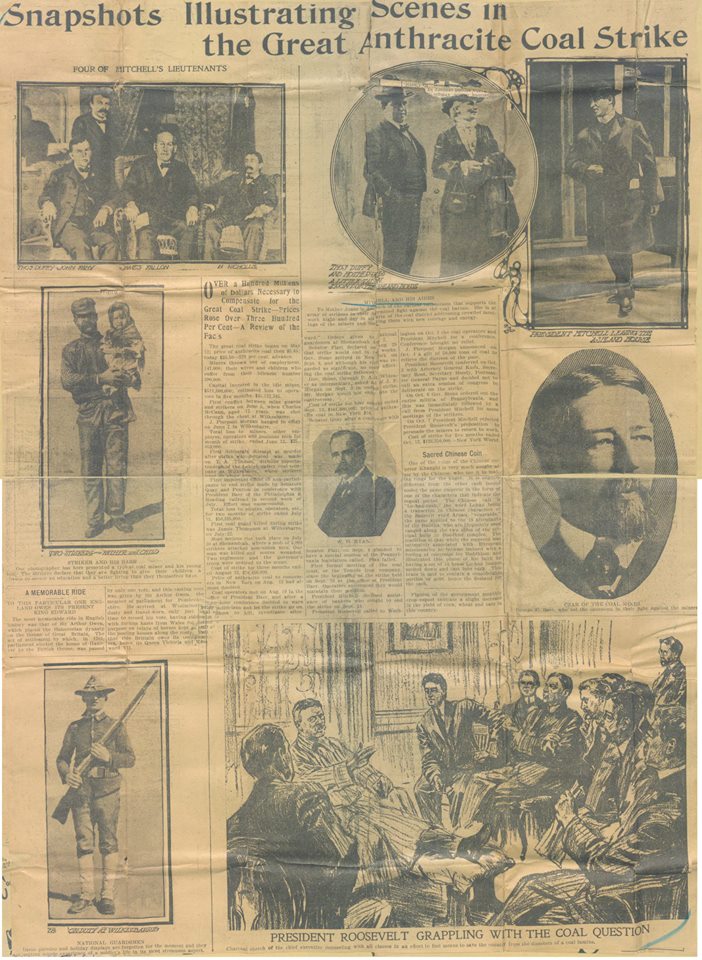


Anthracite Coal Strike Of 1902 What S Up
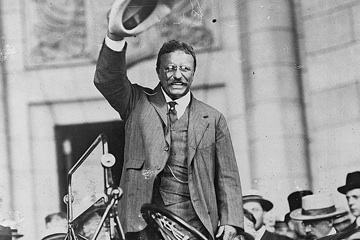


American History Usa



Cartoon Comments On The Coal Strike And Its Settlement Ehistory
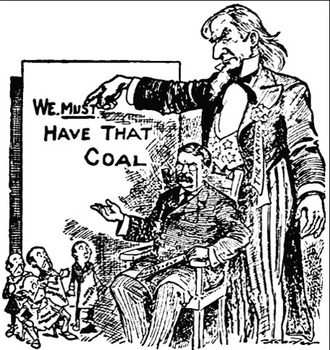


Teddy Roosevelt The Anthracite Coal Strike Railroad Companies And Civil Rights



Great Americans 1902 Anthracite Coal Strike



Coal Strike Of 1902 Youtube


コメント
コメントを投稿